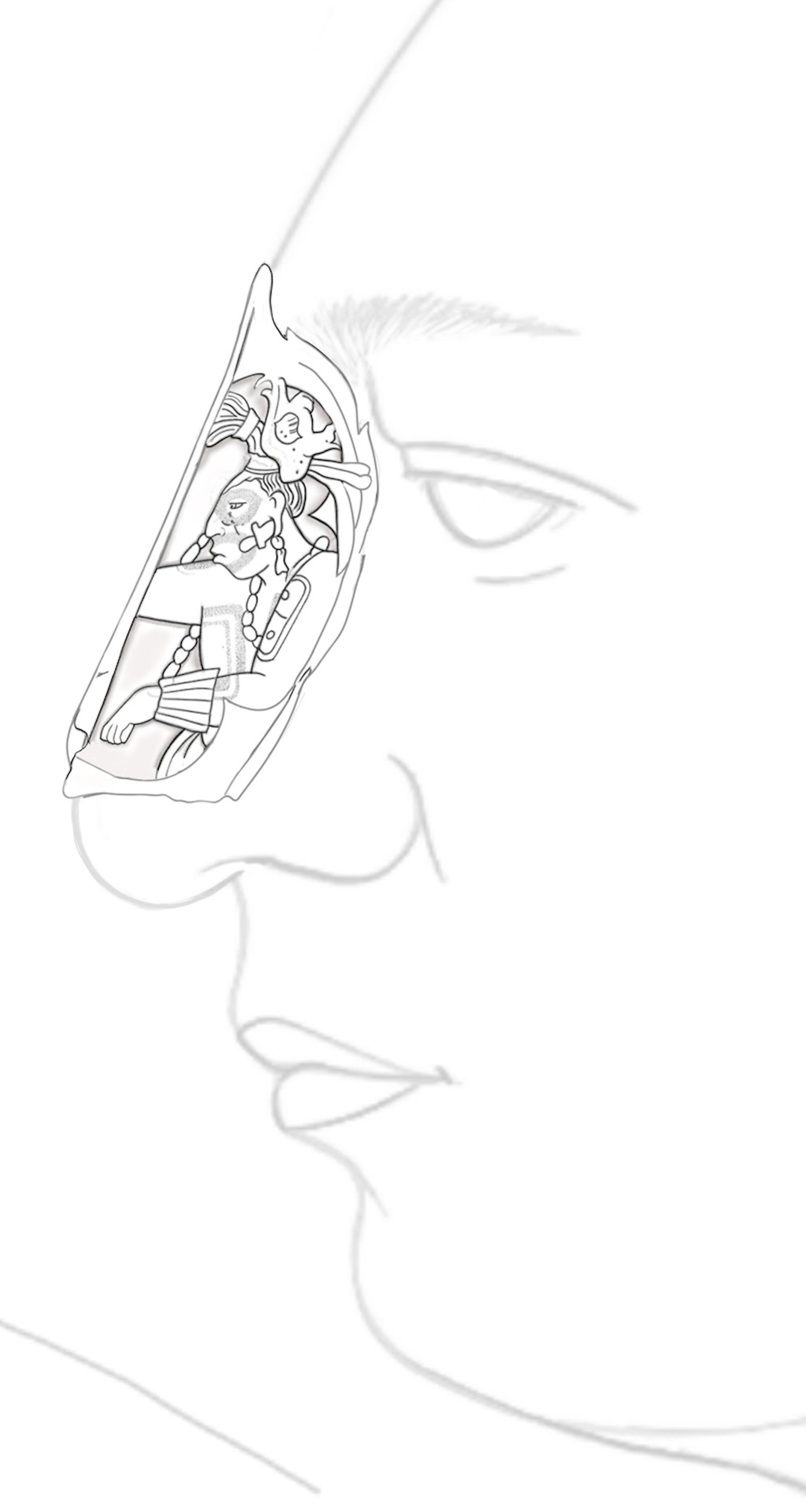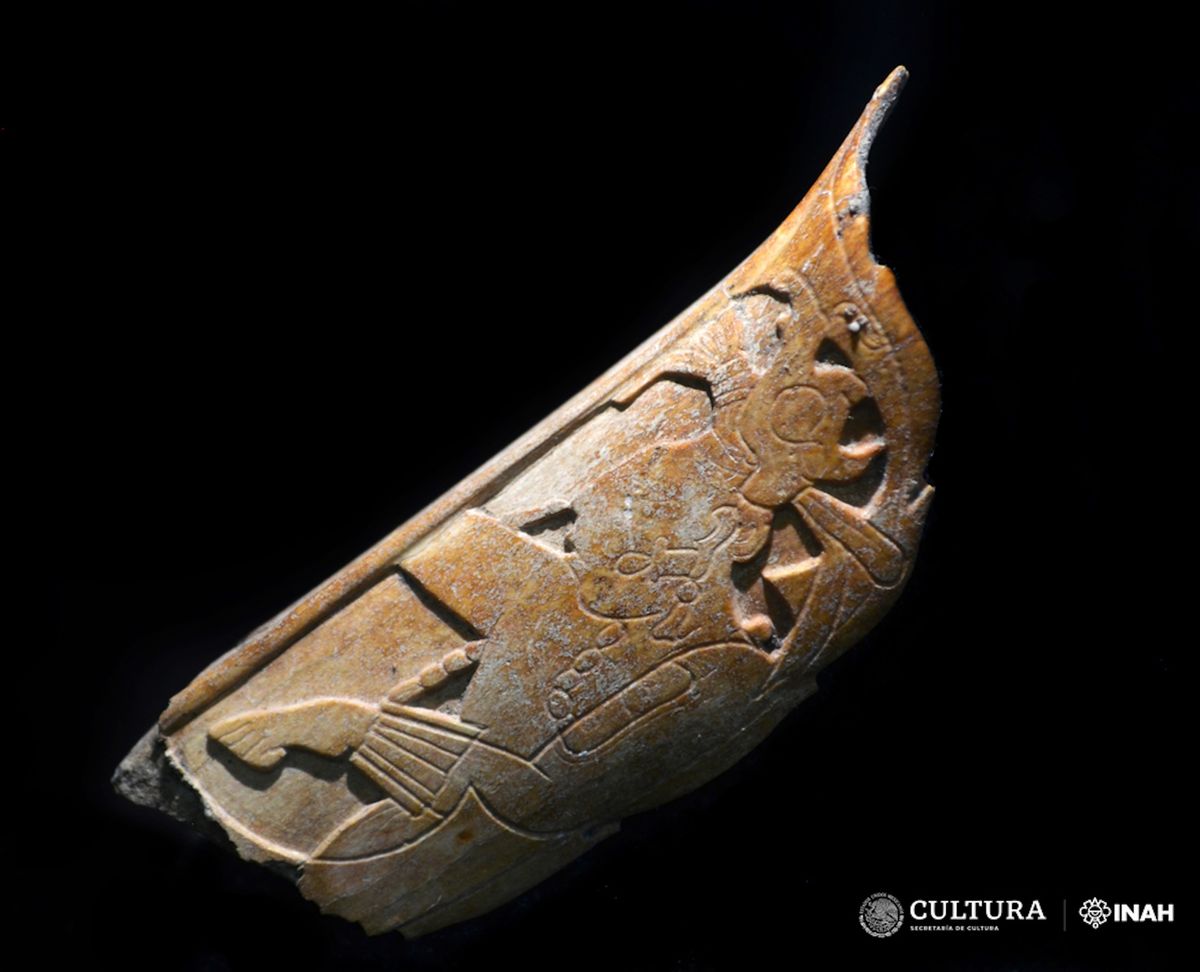Archaeologists in the southern Mexican city of Palenque, Chiapas, have found a centuries-old, intricately carved Maya nose ornament made of human bone that offers insight into ancient funerary traditions. The curved artefact, which measures just over 6cm long and 5cm wide, is believed to have been worn by priests during ceremonies in which they embodied the Mayan deity K’awiil, also known as God K, who is associated with lightning, fertility and abundance. It is also an important example of Mayan artistic sensibilities, Arnoldo González Cruz, director of the National Institute of Anthropology and History (INAH), which conducted the excavations, said in a statement.
The ornament is made of a fragment of the distal tibia, which helps to form the ankle joint, and features engravings that symbolise ceremonial communications with gods and ancestors. The central figure is a Mayan man, shown in profile wearing a headdress and a beaded necklace, who also has on his arm the Mayan glyph for “darkness”. He is accompanied by a skull and carries a bundle that is a common icon in Maya funerary scenes, according to González Cruz.
INAH’s team found the object while conducting conservation work at the Palace of Palenque, an elaborate complex at the centre of the pre-Hispanic city and National Park of Palenque, which is a Unesco World Heritage site. The bone was buried in what archaeologists believe was a ritual deposit, interred between 600CE and 850CE to commemorate the completion of a building. Placed with it were seeds, bones of small animals, obsidian blades and large pieces of coal.

CRendering of how the nasal ornament would have been worn Courtesy INAH
When worn, the precisely carved ornament would have sat on the bridge of the nose, creating a continuous line from the forehead to the tip of the nose. González Cruz said that this was likely an attempt to echo the elongated head of K’awiil, who was often portrayed as a personification of an ear of corn.
This is the first nose ornament of its kind that archaeologists have found in Palenque, although artistic depictions of figures wearing it appear elsewhere at the site. The linear nose form, for instance, was carved onto the lid of the sarcophagus of King Pakal at his burial chamber at Palenque; it also appears on an oval tablet depicting the king and his mother.


